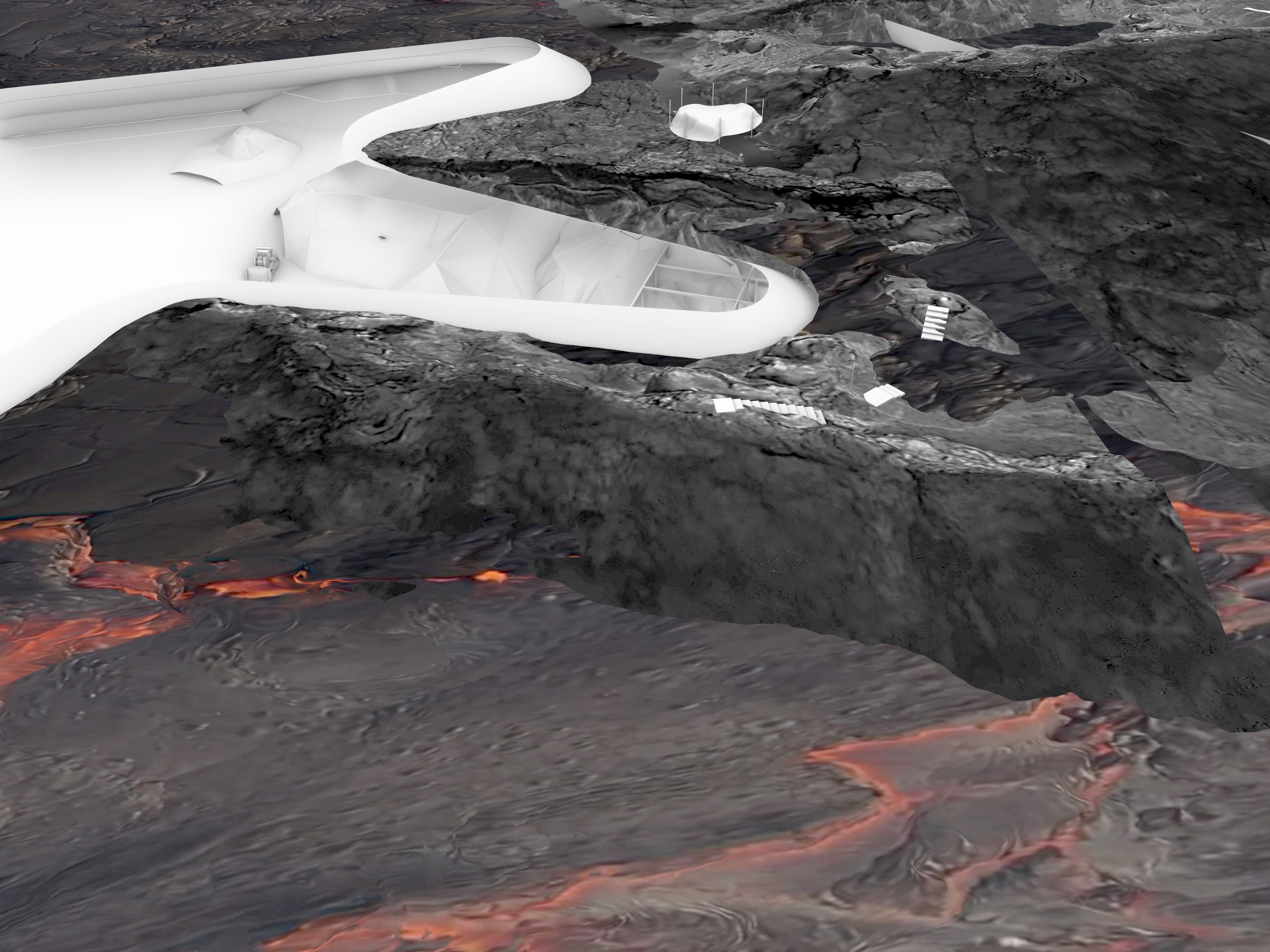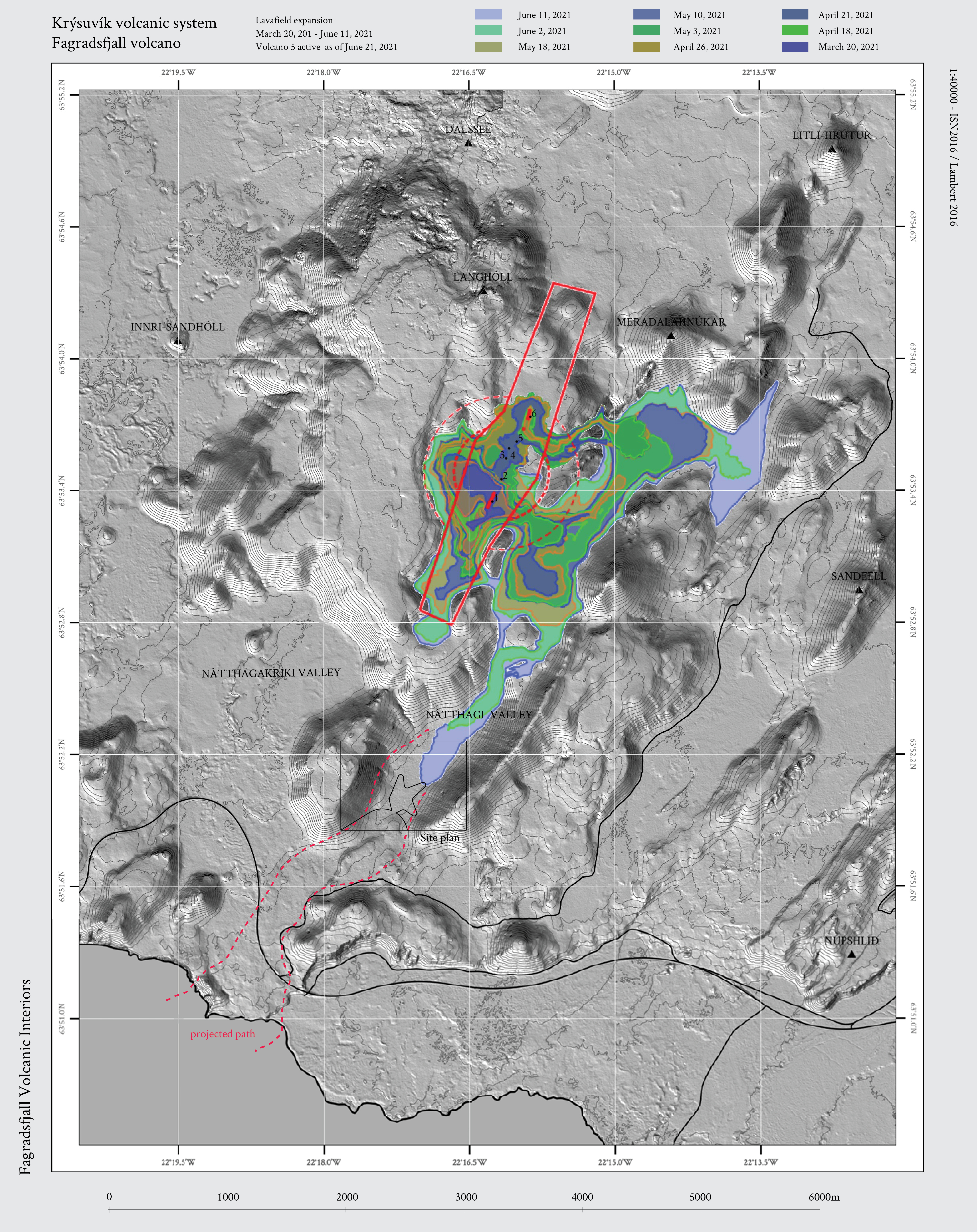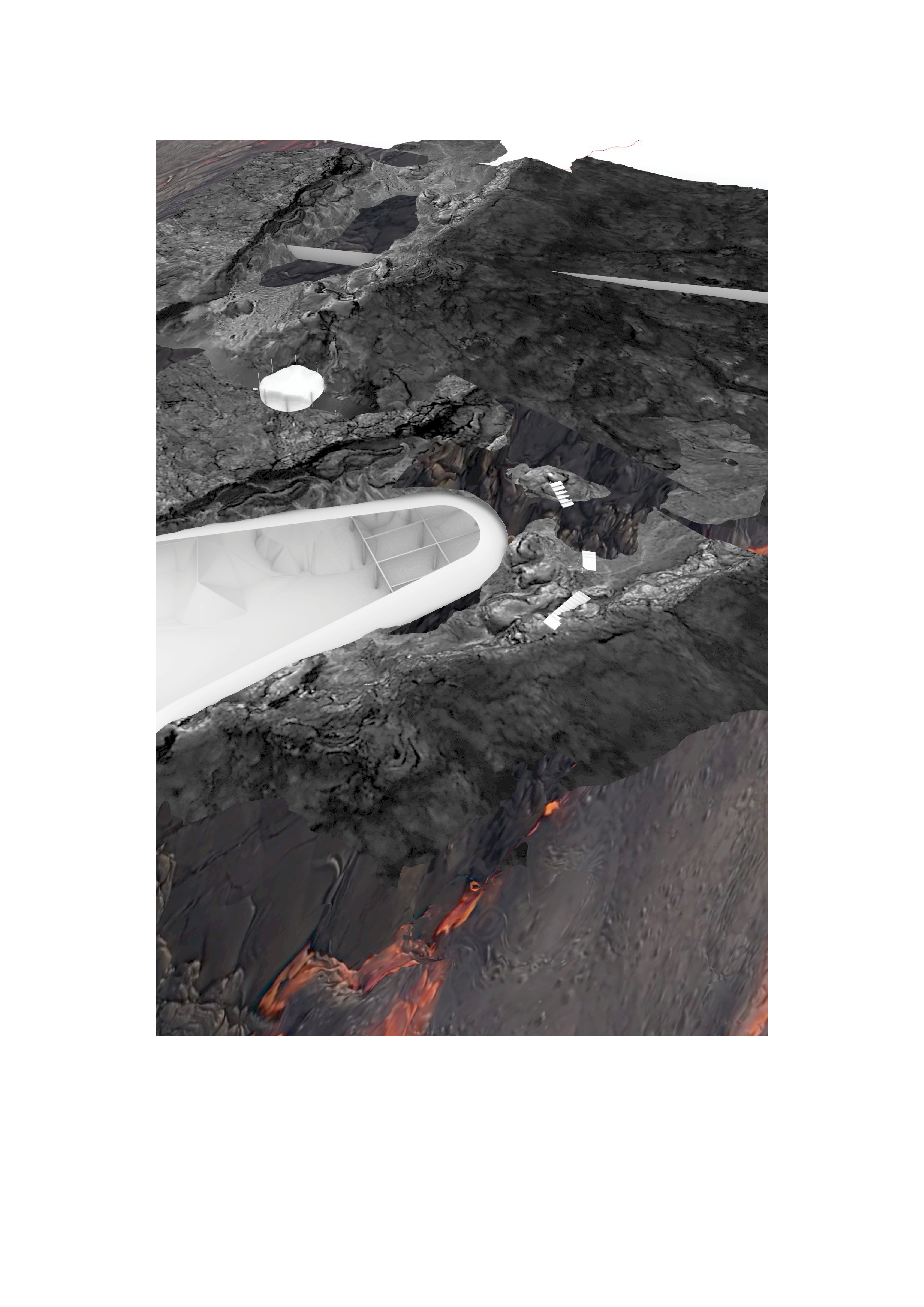FVI
Fagradalsfjall Volcanic Interiors
2021
The School of Architecture, Planning and Landscape (SAPL) at the University of Calgary hosted an international ideas competition, asking: How can designers intervene in borders?
The project investigates an active volcano in Iceland:
The project investigates an active volcano in Iceland:
“As you read this (june 2021), The Fagradsfjall Volcano is actively excreting magma from the deepest parts of the earths mantle into the Nàtthagi Valley, in Iceland. The on-going volcano is part of a the Krýsuvík volcanic system – which has been dormant for the last 800 years. It is located on the edge of the Euroasian tectonic plate and the North American tectonic plate. On the border of these great cracks in the earths surface, fissures, crevices, nooks and crannies are porous conduits to a magmatic underworld.
The volcano's gentle predisposition (stable excretions), unique vertical connection to the inner core (15km- the deepest volcano in the last several thousand years) and proximity to scientific outposts (Rekajikv is less than 1hr away) has and will provide both the common enthusiast and scientist with an optimal field for volcanic experimentation, and data collection.
While it is unknown how long this magmatic portal remains open, it is believed lava could flood into the surrounding valleys for decades. In light of this, Iceland is building a wall to prevent the lava flow from threatening the vital Suðurstrandavegur (south-coast-road), a power landline and other infrastructure on the southern shore of the Reykjanes peninsula.
The defensive earth wall is a practical response to preserve cultural layers on the earths surface. The project asks the question, what if the defensive wall was simultaneously planned as a cultural landscape? What does it mean to shape active, liquid geology?
The project:
1. Earthworks are planned inside of Natthagi valley. The earthworks act as both defensive walls and are the basis for future volcanic interiors. Landscape extraction as interior.
2. The earthworks are then strategically excavated, removing the earthwork, and maintaining the underside of the lavafield.
3. The excavation leaves behind a primitive interior. At times open to the sky above, other times covered by the once molten volcanic deposits
4. Inside of these spaces of extraction you may find the field station for the Institute of Iceland volcanology, botanical experiments, a cathedral to the underworld.



